The perfect wave
Wood and water - got together. Apprentice carpenters build veneer kiteboards. They're really fast and look great.
Die Einstellung kann jederzeit über den Link "Cookie-Einstellungen" am Ende der Seite geändert werden.
Lesen Sie hierzu auch die Datenschutzerklärung von YouTube.
Craftsmanship meets trend sport
Rapid trips across the water - plenty of action and fun – are the characteristics of the new trend sport, kiteboarding. Standing on a board, the kiteboarder is pulled across the water by a kite. Although the origins of kiteboarding reach back to the early 19th century, kiteboarding has only developed into a sport for the masses over the past ten years. There are already more than 500,000 kiteboarders worldwide.
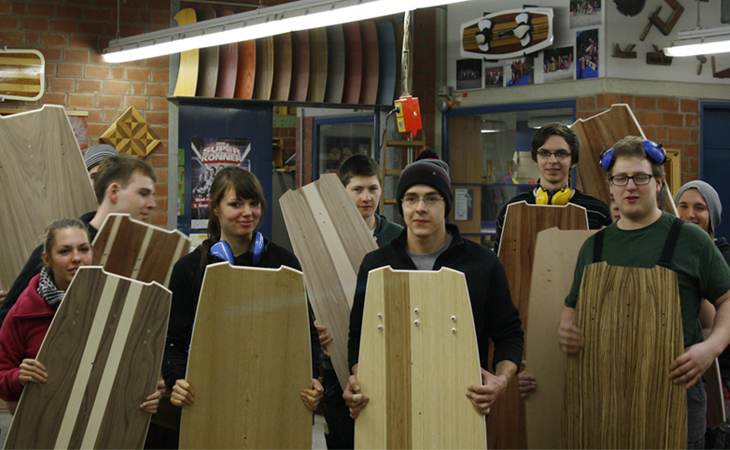
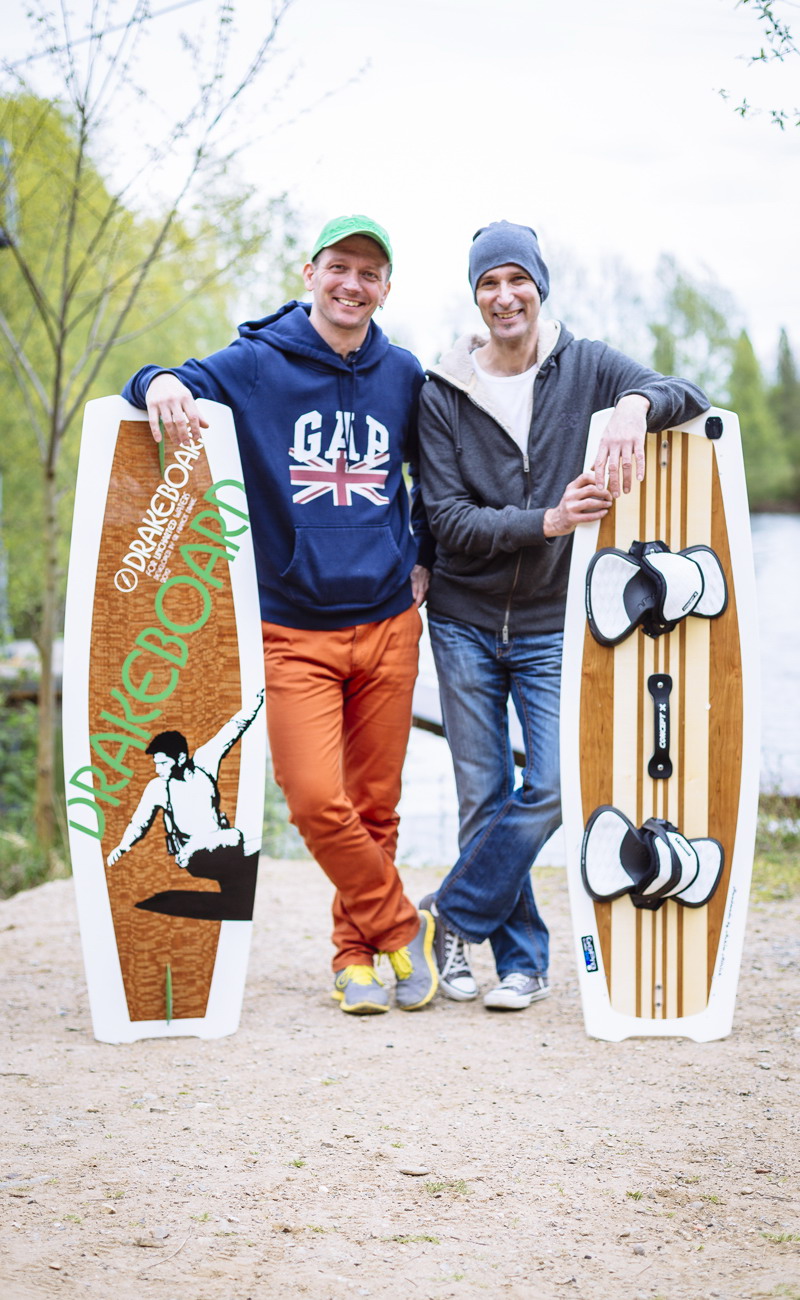
Kiteboards can also be used without kits, on wakeboard facilities. Instead of a kite, the kiteboarder is pulled across the water by a cable winch. The wakeboard facilities frequently also have jumps, where expert boarders can perform breathtaking, acrobatic jumps or even looping.
Some kiteboarders are not only passionate water surfers but are also keen DIY enthusiasts and make their own boards. Self-built kiteboards are frequently made of very thin layers of wood (veneers). If several types of veneer are combined, for example, light and dark-coloured veneers, boards can be created with a unique look.
It's not that easy to build your own first board. But with professional support and working in a group, building a kiteboard becomes a real experience.
Since 2008, Achim Allrich, training manager at the Chamber of Crafts in Cologne, has offered a "Kiteboard Project" with which young trainee craftspersons are given the opportunity to design and produce their own kiteboard.
Allrich founded the workshop not only because of his passion for the material veneer but also his equal passion for building kiteboards. Each course is followed by the practical test. All the participants meet at a wakeboard facility near Cologne to water surf with their kiteboards.
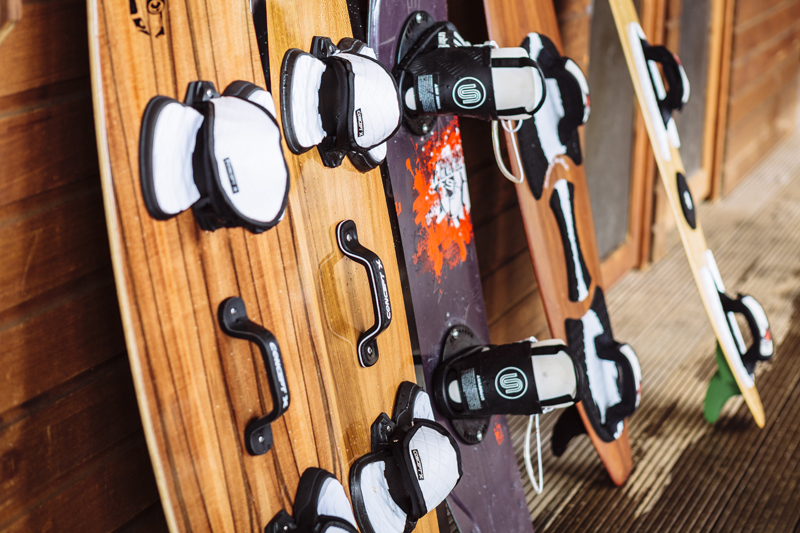
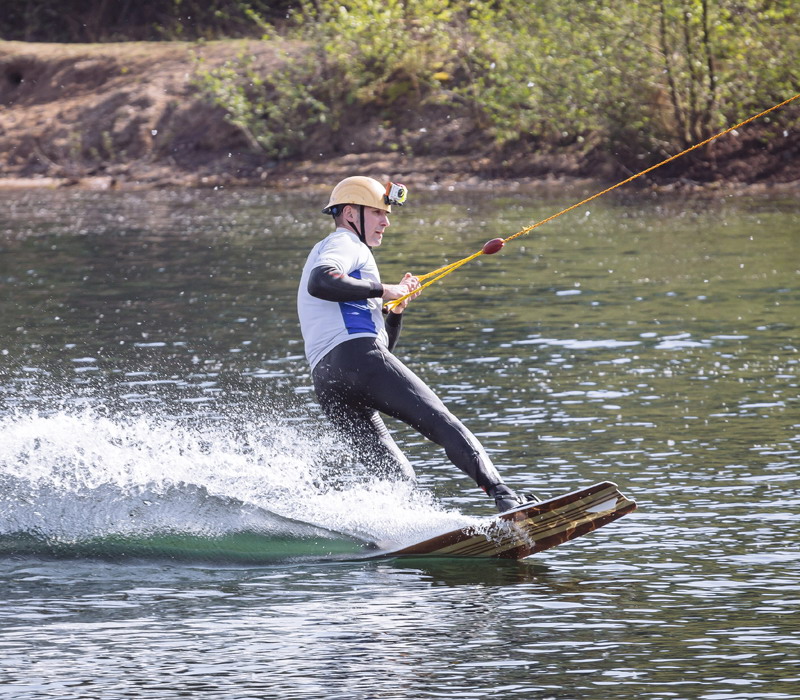
DESIGNER
Achim Allrich
Kiteboards: Veneer glued on Poplar plywood, individually airbrushed and varnished. A project of the Cologne Chamber of Crafts for enthusiastic water-sportspersons who are apprentice carpenters in the Chamber District of Cologne.
www.projekt-kiteboard.de
Interview with Achim Allrich, Head of the Workshops "projekt kiteboard"
It's probably true to say that not everyone knows what the term "kiteboarding" means. Please describe this new sport for us briefly.
Kitesurfing, also called kiteboarding or kitesailing, is a relatively young trend sport, which developed from power kiting. In kitesurfing the sportsperson stands on a board, which is similar to a small surfboard or wakeboard and is pulled across the water by a kit – also called a windscreen or screen. The forwards movement is therefore comparable with surfing driven by wind.
In general, carpenter or joiner trainees build cabinets, chairs or shelves during their training. In your project you give the trainees the opportunity to build their own kiteboard. Where did you get the idea of the workshop?
I discovered the sport years ago and built myself a kiteboard. I was then so thrilled that I thought: I must share this enthusiasm for kiteboards. So I offered this workshop to my trainees. The project was a hit and since then we cannot keep up with the demand.
How did the boards fare in the practical test today in the water skiing facility in Langenfeld? Were all the boards fit for the water?
Completely! (laugh). After a few years you know where to pay particular attention to make a good kiteboard…
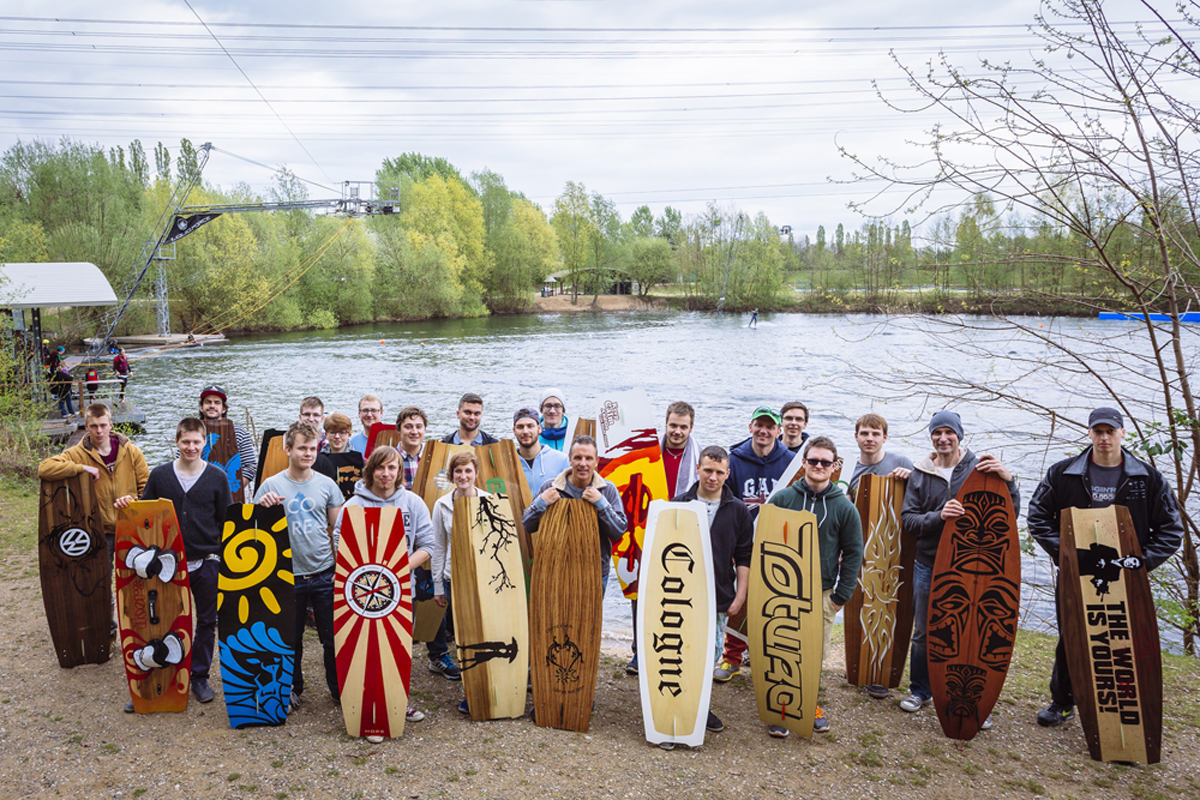
… then tell. How do you make a good kiteboard?
A good kiteboard is built from lightweight wood. It should be very elastic if possible, i.e. it shouldn't break easily. It should naturally also be cleanly worked in craftsmanship terms.
Kiteboards always have a wooden core. Which wood species are particularly suitable for kiteboards?
The most suitable is poplar, i.e. a domestic wood. It is very elastic and very light.
Apropos wood! What is it about wood that fascinates you?
As a carpenter what fascinates me most about wood as a material is that it is warm and lives and some ho the wood is always different.
You are now holding the project for the sixth time and it all takes place at the weekend. I'm sure you're not richly rewarded for it! What motivates you to "sacrifice" several weekends for the project?
To break out from everyday life just once with my trainees. Working on the kiteboard project together with the technical challenges of mastering sport equipment and at the same time using the material wood in an unusual way. We share the enthusiasm and passion in making such a kiteboard and controlling it on the water and this drives us on for other projects with new trainees.
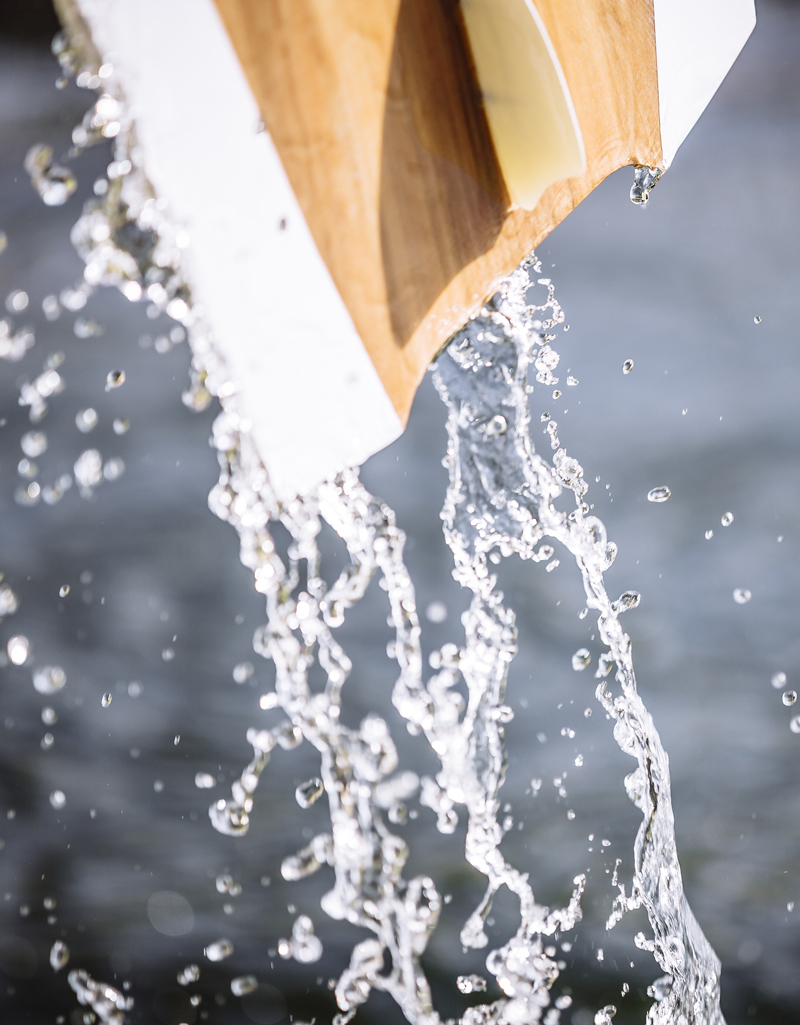
At the end of the project there is the practical test. How do the apprentices do on the water? I'm sure you've got a few good anecdotes up your sleeve?
Many trainees do board sports such as snowboarding or skateboarding, or come to the workshop from surfing or from wind surfing. They therefore master their board really well after a few attempts. One student admitted to me during his first attempt that he was frightened to rush into the water with his board. I then said that he should worry, because the banks could be reached with only a few strokes. But that was the problem. He couldn't swim.